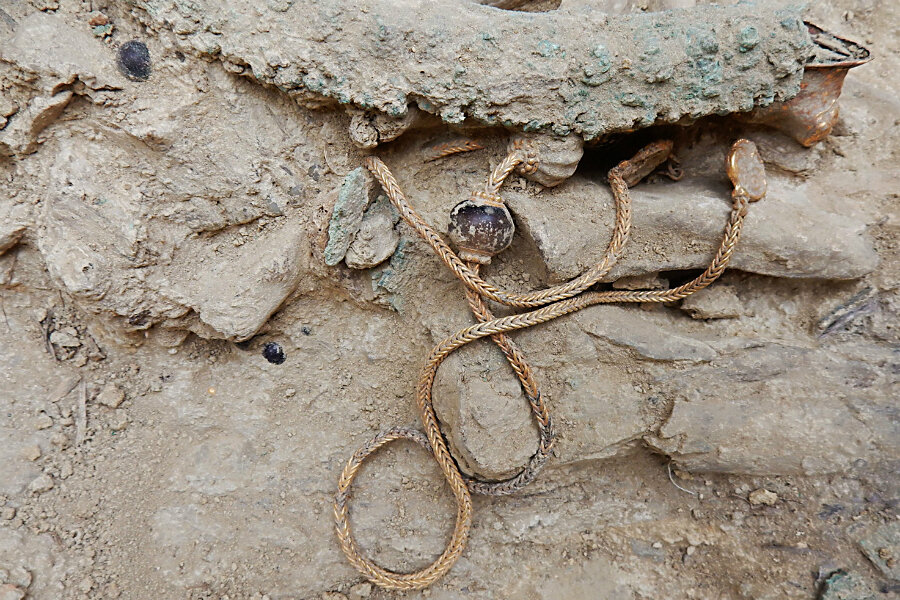Archaeologists in Greece unearth magnificent 3,500-year-old tomb
Loading...
The remains of an ancient warrior that have lain untouched in a treasure-stuffed tomb for 3,500 years have been discovered in Greece.
Found in the ancient city of Pylos, the tomb is from the Mycenaean civilization and pre-dates the battle of Troy by several hundred years, The New York Times reports. On the floor of the tomb lay the skeleton of an adult male, stretched out on his back. Weapons lay to his left, and jewelry to his right, the Greek Culture Ministry confirmed in a statement.
The ministry called the treasure “the most important to have been discovered [in continental Greece] in 65 years.”
Among the treasures were gold rings, a solid necklace, a sword with ivory handle, silver bowls, bronze vases, copper jugs, 50 seal stones, more than 1,000 engraved gemstones, and an ornate ivory-and gilt-hilted sword. There were about 1,400 unique artifacts in total.
"This guy was really, really rich," Sharon Stocker, who uncovered the tomb with Jack Davis, told the Los Angeles Times.
His bones suggest he was "strong, robust ... well-fed," however, "We don’t know his name, and we don’t really know anything else about him," Stocker said.
According to the Greek Culture Ministry, many of the items discovered in the grave were made in nearby Crete and show a strong Minoan style and technique unknown in mainland Greece in the 15th century BC.
“By comparing the artifacts with objects in tombs that have been securely dated through their pottery, the archaeologists have concluded that the warrior was buried around 1500 BC, at the dawn of European civilization,” The Washington Post reports.
Davis told the University of Cincinnati’s magazine, “Whoever he was, he seems to have been celebrated for his trading or fighting in nearby island of Crete and for his appreciation of the more-sophisticated and delicate are of the Minoan civilization (found on Crete), with which he was buried.”
The discovery has prompted new consideration of ancient Greek history and the researchers will be seeking to discover how the Minoan culture passed to the Mycenaean people, who are considered the first advanced civilization in mainland Greece.
According to James C. Wright, the director of the American School of Classical Studies at Athens, the grave lies “at the date at the heart of the relationship of the mainland culture to the higher culture of Crete” and will help scholars understand how the state cultures that developed in Crete were adopted into what became the Mycenaean palace culture on the mainland, the Times reports.
While the archaeologists do not know who the man was, they believe he was a person of great importance – a powerful warrior or king, or even a trader or a raider – who died when he was between 30 and 35 years.







